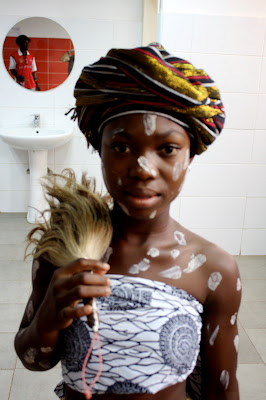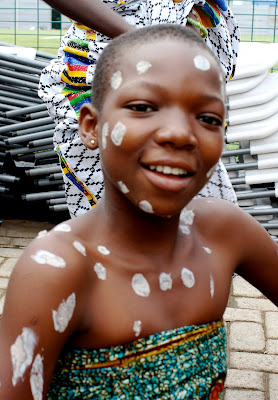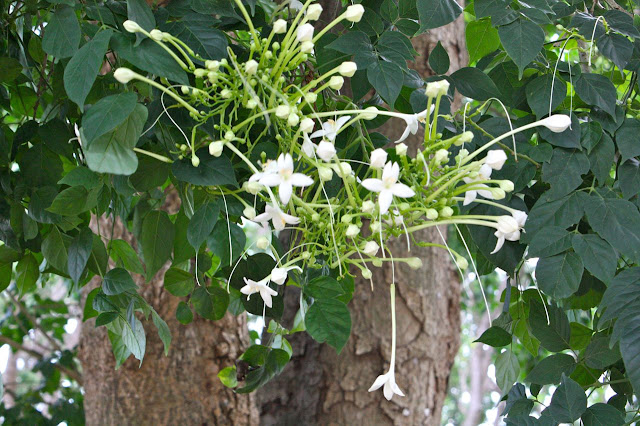This is the view from the back of our new house facing west-ish. Little Vesuvius in the centre-right is actually an anthill that’s more or less 12 feet high. Seriously.
The land we’re on was loaned by the University of Ghana to the
engineering firm that built the George Bush Highway. (Dunno if its for Dubyah
or the other guy, or if they’re supposed to share.) The deal was the company
could borrow land from the university for houses that would be deeded to the
university in lieu of rent at the end of the project.
 |
| Ours is the house on the right. |
Five of ten houses are occupied. We think of it as the first
tract home development we’ve lived in: all the trees are the same height;
everyone has the same garbage can; uniformity, people, uniformity. We
have two bedrooms, our most functional kitchen to-date, privacy, and a couple
of dynamite porches tacked to the house’s front and back.
Our rear windows look out over grassland that turns into a cornfield. The vertical cement posts across the back are intended to support a barbed wire fence. Besides ants, the fields host a variety of birds, including some I hadn’t ever seen until we encamped. There’s one eccentric variety of brown bird that sashays its hind quarters toward starboard and port at the same time it both condenses and loosens its tail feathers when it walks, as if it were a strutting girl wagging a ponytail, then fans its tail feathers really wide and flat for flight. Wacky. (PS. An amateur ornithologist friend made me track down the bird. It is a Senegal Coucal.)
 |
| Chai's routine is largely unchanged since moving. |















































